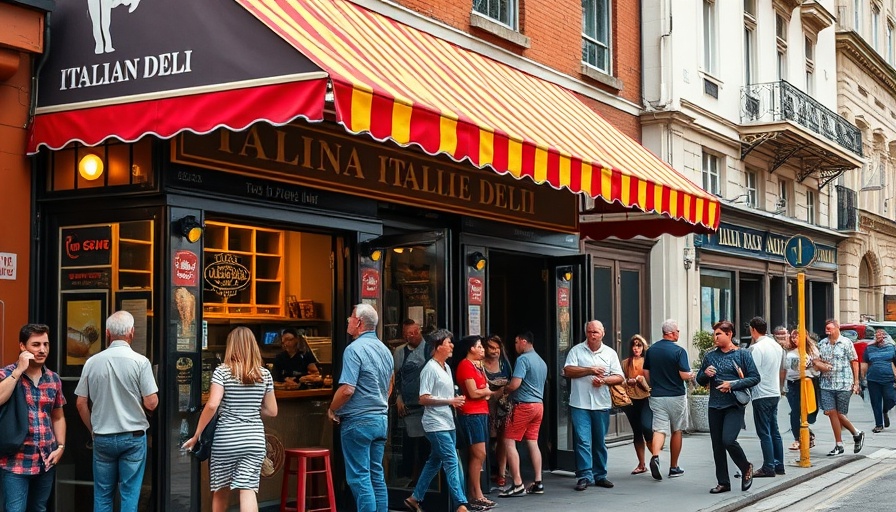
A New Era for a Beloved San Francisco Landmark
In a monumental shift for the Mission District, former Lucca Ravioli Co. is being transformed from a cherished Italian deli into The Corner Store, a high-tech community hub operating under payment processing giant Square. This business resource center, which opens next week, appears set to breathe new life into a location that has seen better days.
The Vision Behind The Corner Store
Square's initiative aims to foster a thriving business community while adapting to the fast-evolving tech landscape. During the day, the space will serve as a resource center where business owners can purchase modern payment processing equipment and consult with Square employees, echoing the mini Apple store experience. Evenings will host community-centric events, enabling opportunities for entrepreneurs to gather, learn, and connect.
Local Events to Spark Engagement
Residents of San Francisco can look forward to a vibrant calendar filled with events tailored to local business needs, from panels on starting a business to neighborhood nights featuring music and food. As stated by a Square spokesperson, "In 2024, Square processed more than 20,000 transactions per day in the Mission," reflecting the area's robust engagement with commerce. The events are designed not only to educate but to strengthen ties within the community, reviving those personal connections that benefit local businesses.
A Historical Perspective: From Lucca Ravioli to The Corner Store
Lucca Ravioli Co. was more than just a grocery store; it was a staple of the community for over 90 years, closing its doors only after being sold in 2019. The transition to The Corner Store marks a significant chapter in the site's history. After a brief tumultuous period marred by creative endeavors that brought challenges, the restoration is a hopeful signal of revitalization. Landlord Ted Plant sees promise in the new tenant, saying, "It’s a really nice corner, so I think it’ll work well for them." This sentiment resonates as the locality anticipates the community's renewed vibrance.
What This Means for San Francisco Residents
For parents, adults, and solo entrepreneurs across the United States, Canada, UK, and beyond, The Corner Store represents a unique fusion of high-tech solutions with local charm. Is it merely a tech upgrade, or does it signify a larger trend towards merging technology with community? By emphasizing local resources and providing an accessible platform for entrepreneurs, The Corner Store may be a model for further initiatives advocating for small businesses amid a digital age that often sidelines them.
Future Trends in Local Business Development
As we look ahead, the success of The Corner Store can set a precedent for similar initiatives in other neighborhoods. Digitalization doesn't have to compromise local character; instead, it can enhance collaborations that sustain community ideals. If well-received, this hub could herald a new era of localized technological advancement that champions public safety, enhances neighborhood initiatives, and reaffirms cultural heritage.
Final Thoughts: Stay Informed and Involved
For those invested in the pulse of San Francisco's neighborhoods, staying informed about local developments is crucial. Engaging with businesses like The Corner Store can help restore that sense of community lost in a rapidly changing world. As they host events, consider participating not only to gather knowledge but to contribute to the communal spirit that defines San Francisco.
As the intersection of technology and community continues to evolve, make it a priority to support local businesses and participate in initiatives that nourish these essential links. Your involvement could be the factor that helps bridge the gap between the old and the new, preserving the rich tapestry of our neighborhoods.
Whether you're a business owner, parent, or simply a resident, there is no better time to engage with the vibrant community spirit in places like The Corner Store.
 Add Row
Add Row  Add
Add 




Write A Comment